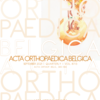The role of joint line position and restoration of posterior condylar offset in revision total knee arthroplasty : a systematic review of 422 revision knees arthroplasty
revision total knee arthroplasty ; total knee replacement ; joint line ; posterior femoral condylar offset
Published online: Nov 22 2021
Abstract
The aim of this systematic review was to evaluate the evidence on reservation of Posterior Femoral Condylar Offset (PFCO) and Joint Line (JL) after Revision Total Knee Arthroplasty (RTKA) for im- proved functional outcomes.
A comprehensive search of PubMed, Medline, Cochrane, CINAHL, and Embase databases was conducted, with papers published from the inception of the database to October 2020 included. All relevant articles were retrieved, and their bibliographies were hand searched for further references on Posterior condylar offset and revision total knee arthroplasty. The search strategy yielded 28 articles. After duplicate titles were excluded, abstracts and full text were reviewed. Nine studies were assessed for eligibility, four studies were excluded because they did not fully comply with the inclusion criteria. Six articles were finally included in this systematic review.
Based on this systematic review restoration of the JL and PFCO in RTKR is associated with a significant improvement in the post-operative range of motion, KSS, OKS, patellar function, and SF-36.
Reservation of JL should be a major consideration when undertaking RTKA. Of note, increasing PFCO to balance the flexion gap while maintaining joint line should be well assessed intra-operatively. The upper limit of the PFCO that widely accepted is up to 40 % greater than that of the native knee. 4 mm is the upper limit for JL restoration.
Level of evidence III.
